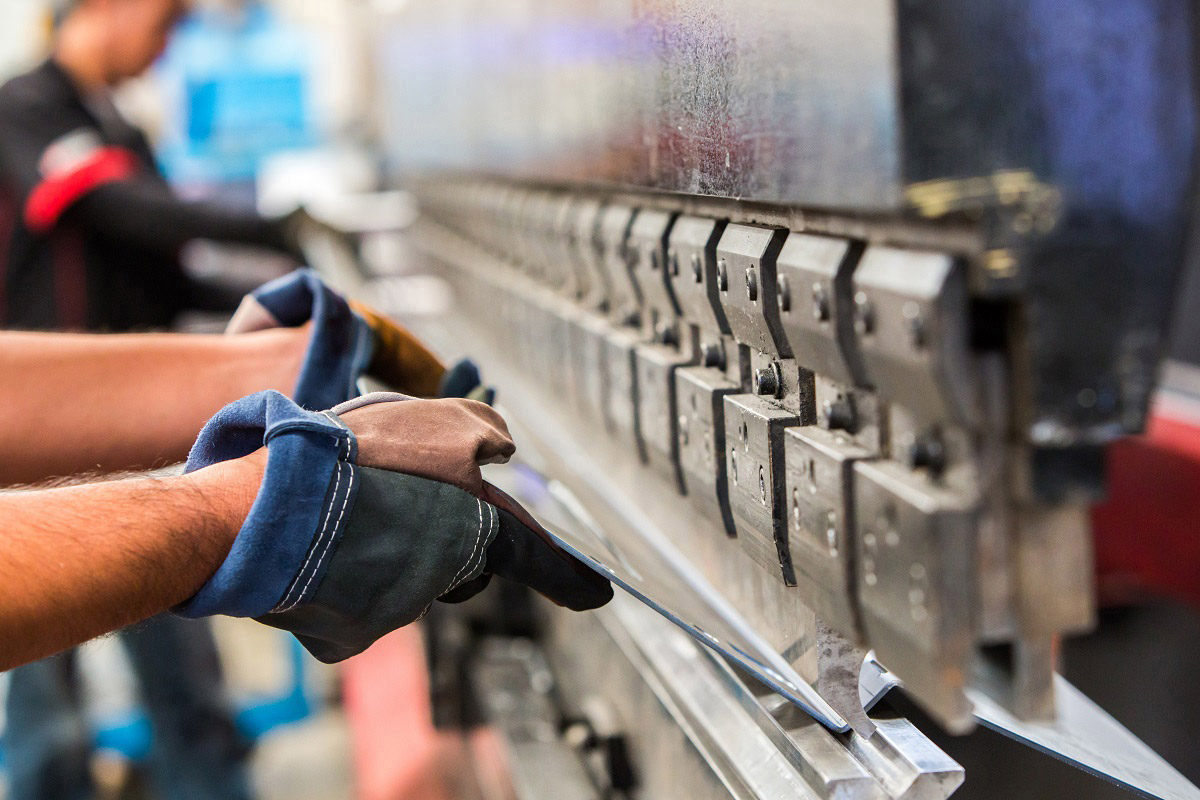Metal Stamping Developments: Elevating Manufacturing Processes for Superior Results
In the world of making procedures, metal marking has actually long been a cornerstone method for creating a variety of precision parts. With the relentless march of technical innovation, the landscape of metal stamping is undertaking a significant improvement.
Development of Metal Stamping Techniques

Additionally, developments in product science have brought about the growth of high-strength alloys that can currently be seamlessly marked into complex shapes, accommodating a more comprehensive array of commercial applications. The combination of robotics and man-made knowledge has further optimized the marking procedure by enhancing speed and precision while decreasing the risk of human mistake.

Influence of Advanced Materials
Have sophisticated products changed steel marking processes significantly in the production market? By utilizing materials such as high-strength alloys, progressed composites, and ingenious coatings, steel stamping procedures can currently generate components that are lighter, stronger, and a lot more durable than ever previously.
These sophisticated products offer superior mechanical residential properties, deterioration resistance, and thermal security, allowing suppliers to satisfy the demands of modern industries such as aerospace, auto, and electronics. Additionally, using innovative materials in metal stamping has facilitated the manufacturing of intricate geometries and complex designs that were formerly unattainable with traditional methods.
Additionally, the application of innovative materials has actually led to lowered product waste, lower manufacturing prices, and much shorter preparations, making metal stamping procedures much more affordable and lasting. As technology remains to development, the effect of innovative materials on steel stamping processes is anticipated to drive more technology and boost the competitiveness of makers in the worldwide market.
Automation in Steel Stamping
The evolution of steel marking processes driven by the assimilation of innovative materials has set the stage for significant improvements in automation within the production industry. Automation in metal stamping has actually reinvented manufacturing processes, enhancing performance, precision, and total outcome top quality. With the utilization of robotics, sensors, and computer-controlled systems, jobs that were lengthy and as soon as manual can now be executed with unequaled rate and accuracy.
Automation in steel stamping not only accelerates manufacturing prices yet also makes certain uniformity in the production procedure. By lessening human treatment, the danger of mistakes is considerably lowered, bring about higher levels of check my blog item harmony and reliability. Furthermore, automation enables suppliers to embark on intricate stamping tasks that would be difficult or impractical to achieve by hand.
Moreover, automation in metal stamping contributes to a more secure working setting by reducing the requirement for employees to participate in recurring or harmful tasks - Metal Stamping. This change towards automation not only boosts performance yet additionally leads the way for the future of production, where innovation plays a main duty in driving functional quality
Quality Control and Assessment Equipments
With a concentrate on accuracy and integrity, quality assurance and inspection systems play a vital role in ensuring product quality in steel stamping processes. These systems are designed to monitor every stage of manufacturing, from product evaluation to the final item, to ensure that all components satisfy the needed criteria. By applying sophisticated innovations such as optical examination systems, coordinate determining machines (CMM), and automated evaluating devices, producers can identify even the smallest inconsistencies in measurements, surface high quality, and general integrity of stamped parts.

Sustainability Practices in Steel Stamping
Structure upon the foundation of accuracy and integrity developed via quality control and examination systems, the integration of lasting methods in steel stamping processes is increasingly coming to be a prime focus for producers looking for to lessen ecological influence and maximize resource utilization. Sustainability practices in metal marking incorporate a range of campaigns targeted at minimizing waste generation, energy consumption, and greenhouse gas emissions throughout the production process.
One key facet of sustainability in steel marking is the adoption of environment-friendly materials and technologies that advertise recyclability and waste reduction. By utilizing recycled products and carrying out energy-efficient machinery, manufacturers can lower their carbon impact and contribute to a more sustainable production cycle. In addition, maximizing manufacturing procedures to decrease product waste and power use not just profits the setting however also leads to set you back savings for companies over time.
Additionally, the application of sustainable methods in metal stamping can boost brand credibility and interest eco conscious consumers. As sustainability remains to gain value in the production industry, integrating eco-friendly efforts into metal marking processes is necessary for long-term success and competitiveness out there.
Verdict
In final thought, steel marking methods have actually significantly progressed gradually, including advanced products and automation to improve manufacturing processes. Quality assurance and assessment systems play a critical function in making certain find more superior outcomes, while sustainability methods are increasingly being implemented to decrease ecological influence. These technologies in steel marking have revolutionized the industry, leading to extra sustainable and efficient manufacturing techniques for numerous markets.
Steel marking, once a handbook and labor-intensive procedure, has changed right into a very automated and innovative approach of forming metal sheets into various forms and designs.Have advanced materials transformed metal marking processes dramatically in the manufacturing industry? By utilizing products such as high-strength alloys, progressed composites, and innovative layers, steel marking processes can now generate parts that are lighter, more powerful, and a lot more long lasting than ever previously.
The development of metal marking procedures driven by the assimilation of innovative materials has set the stage for significant advancements in automation within the manufacturing market.In final thought, metal stamping methods have actually significantly evolved over time, incorporating advanced materials and automation to enhance producing procedures.